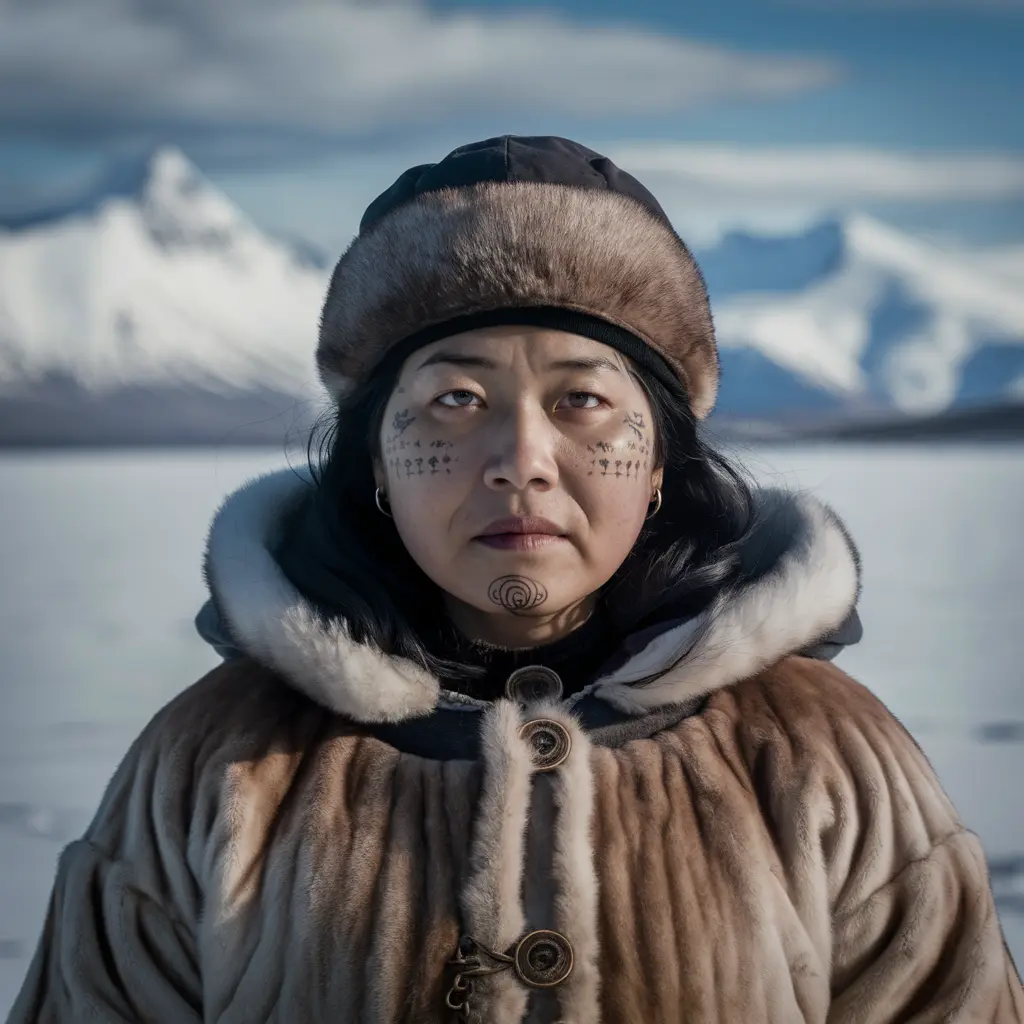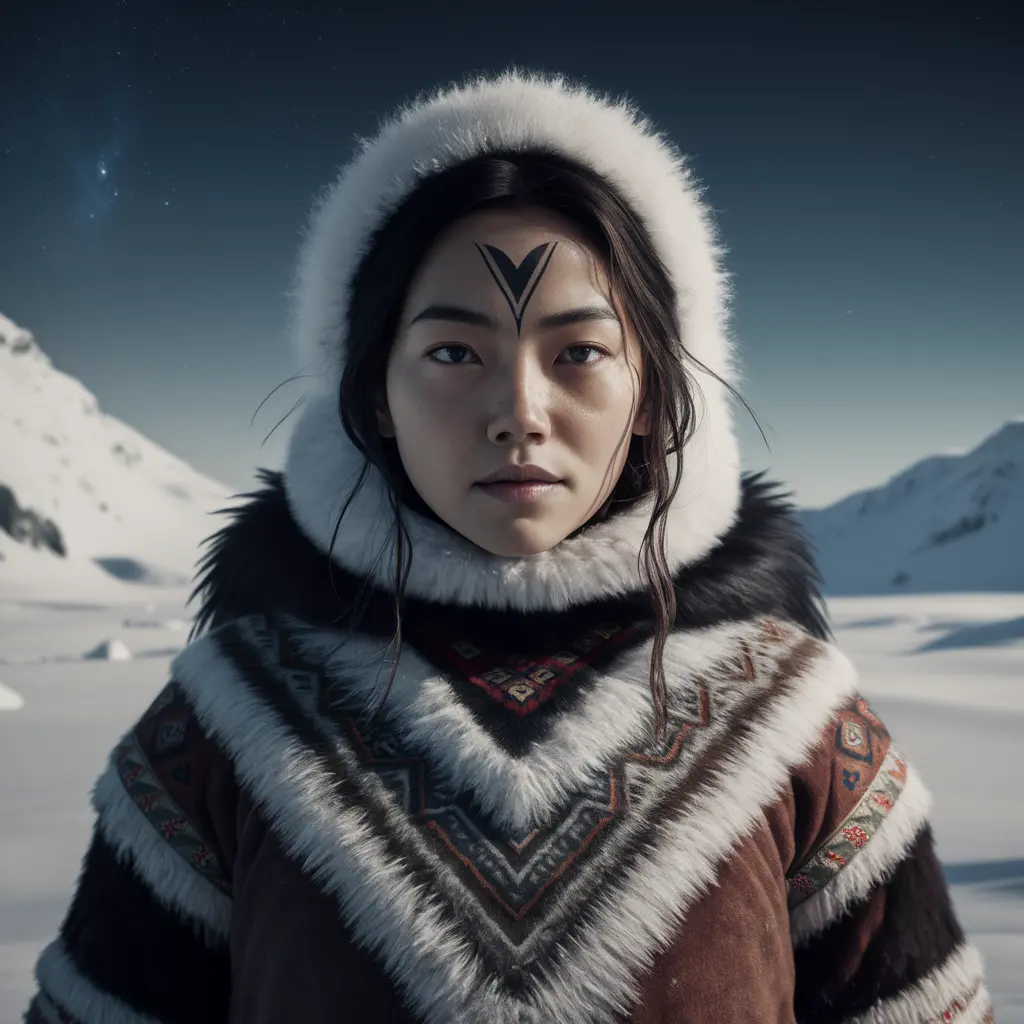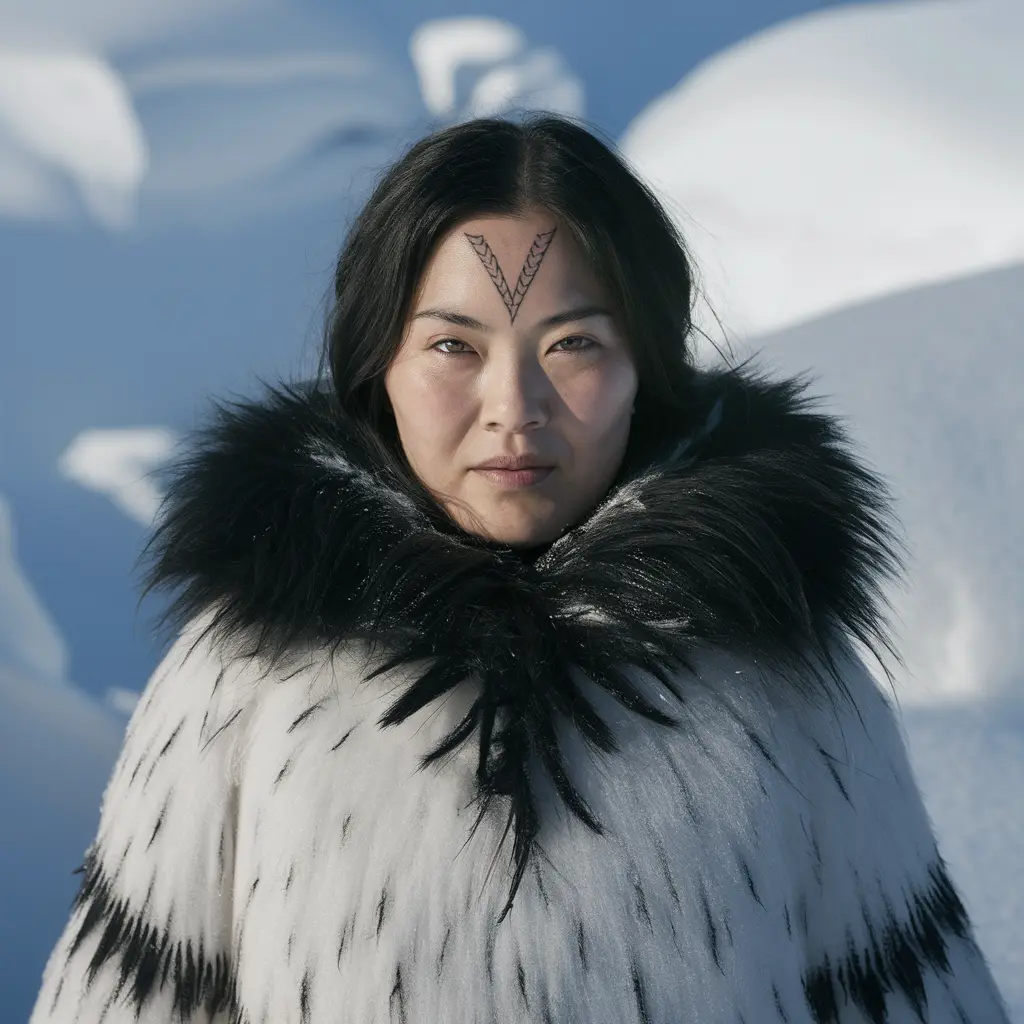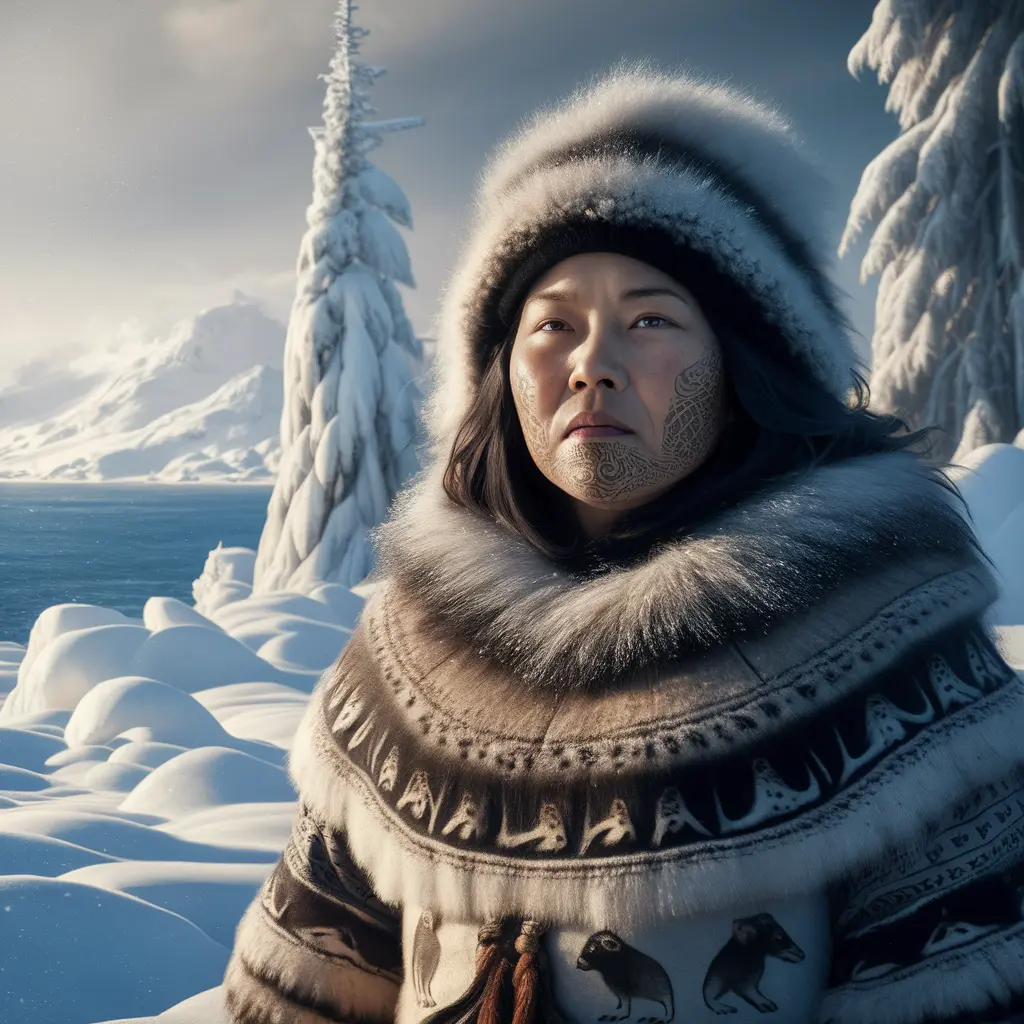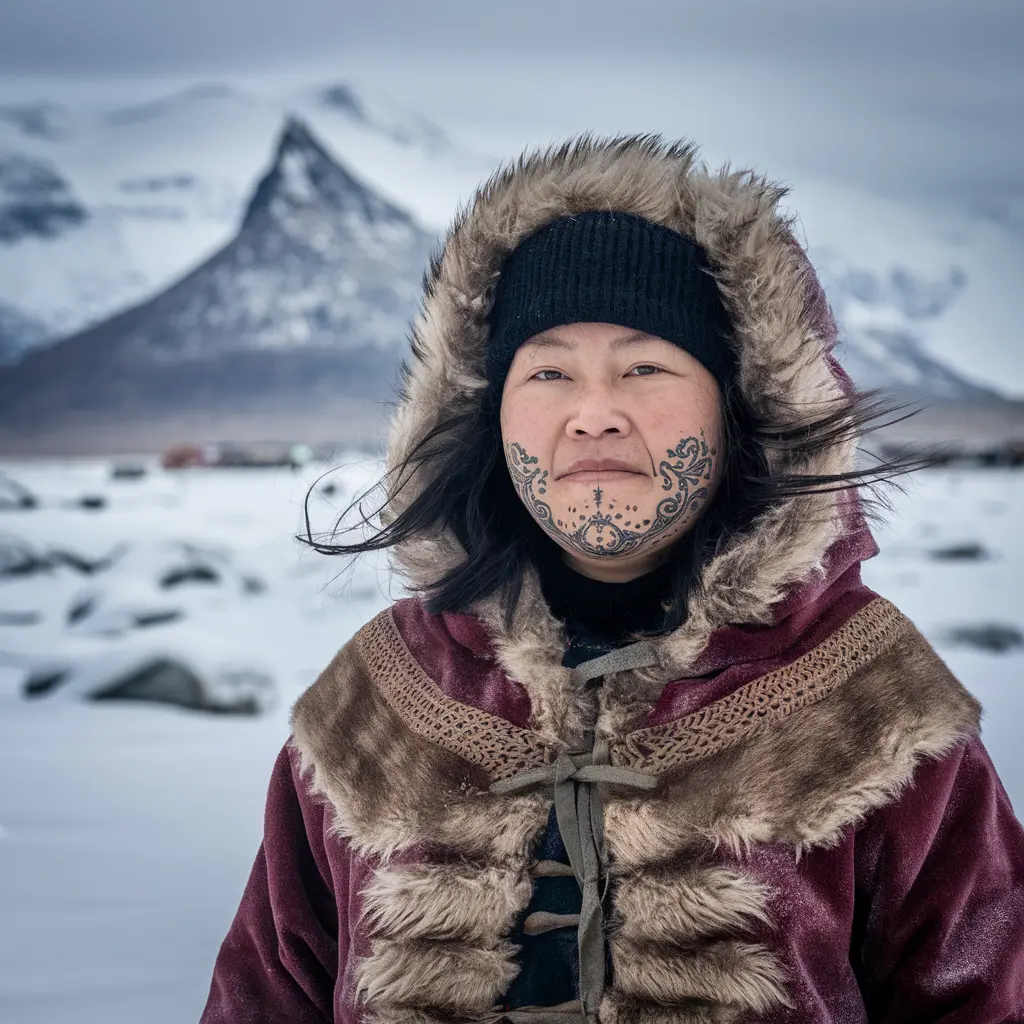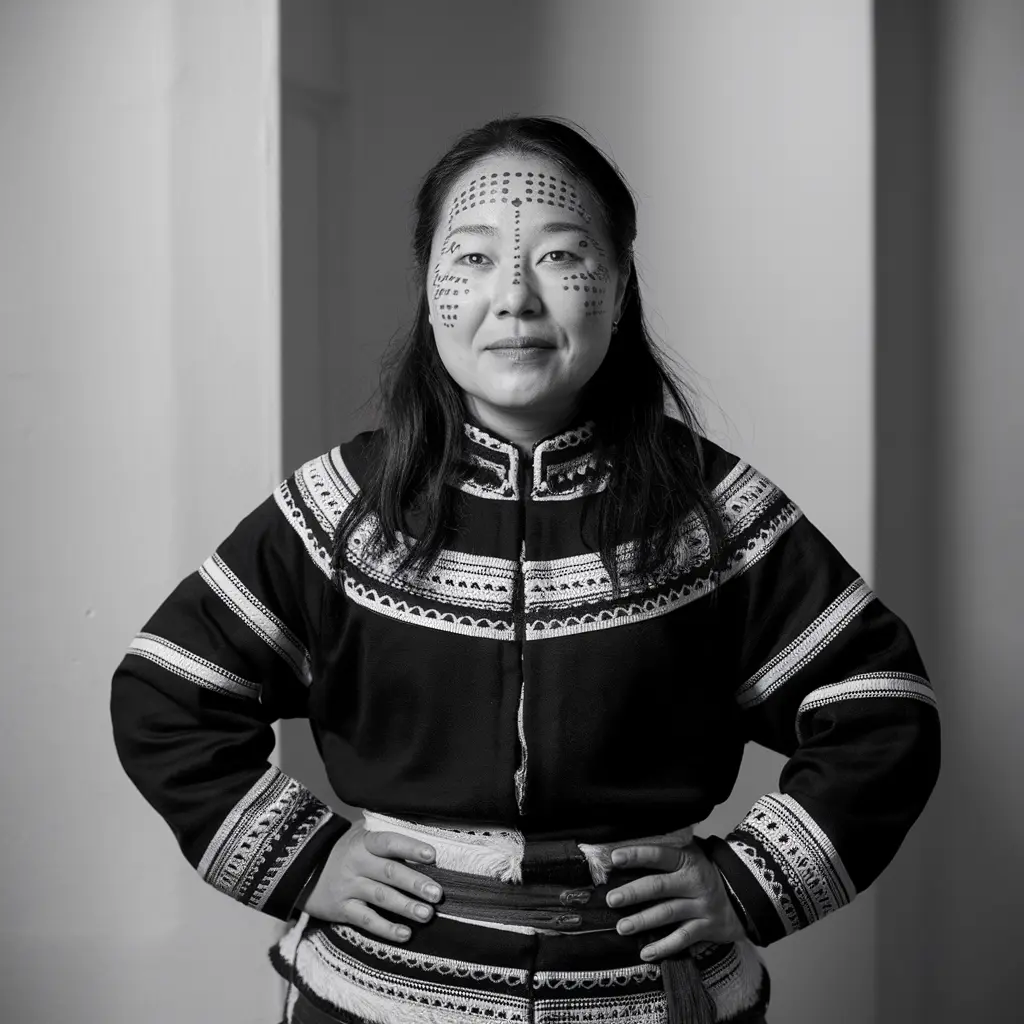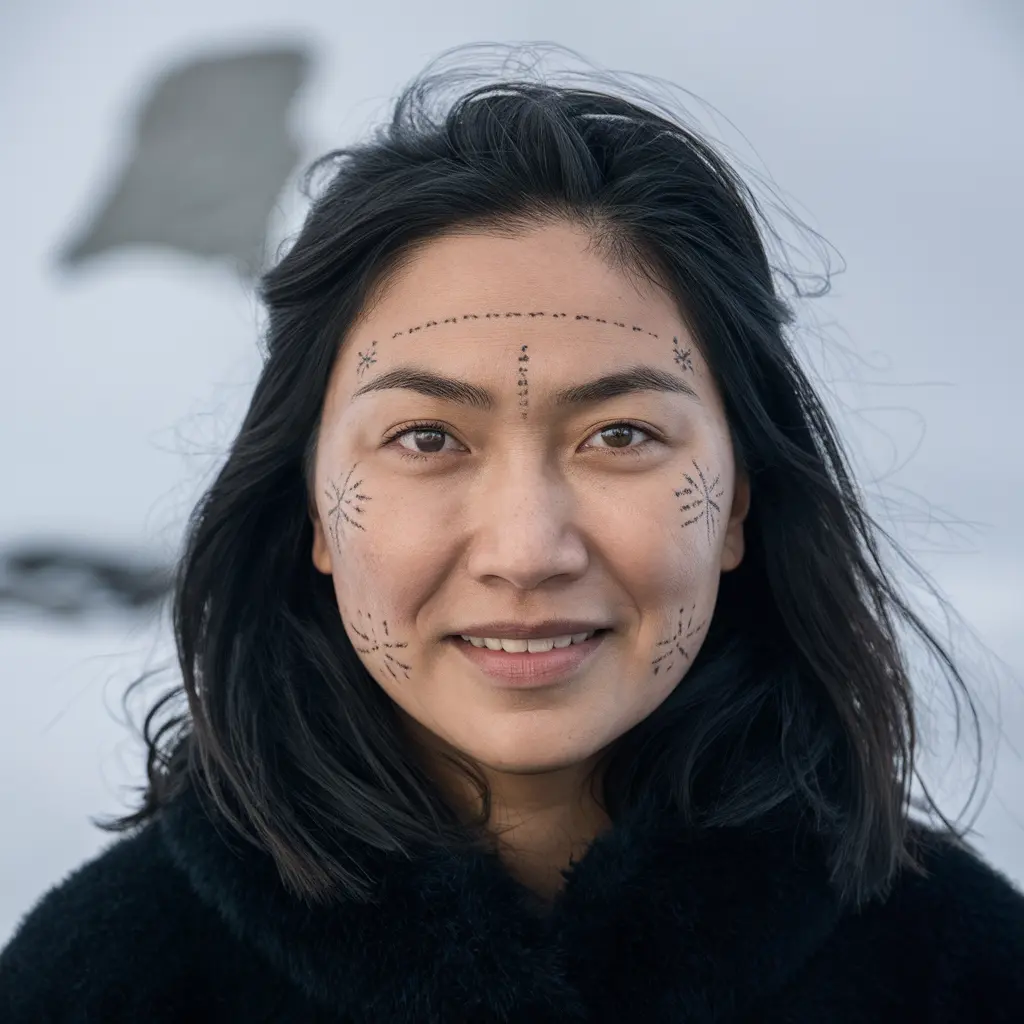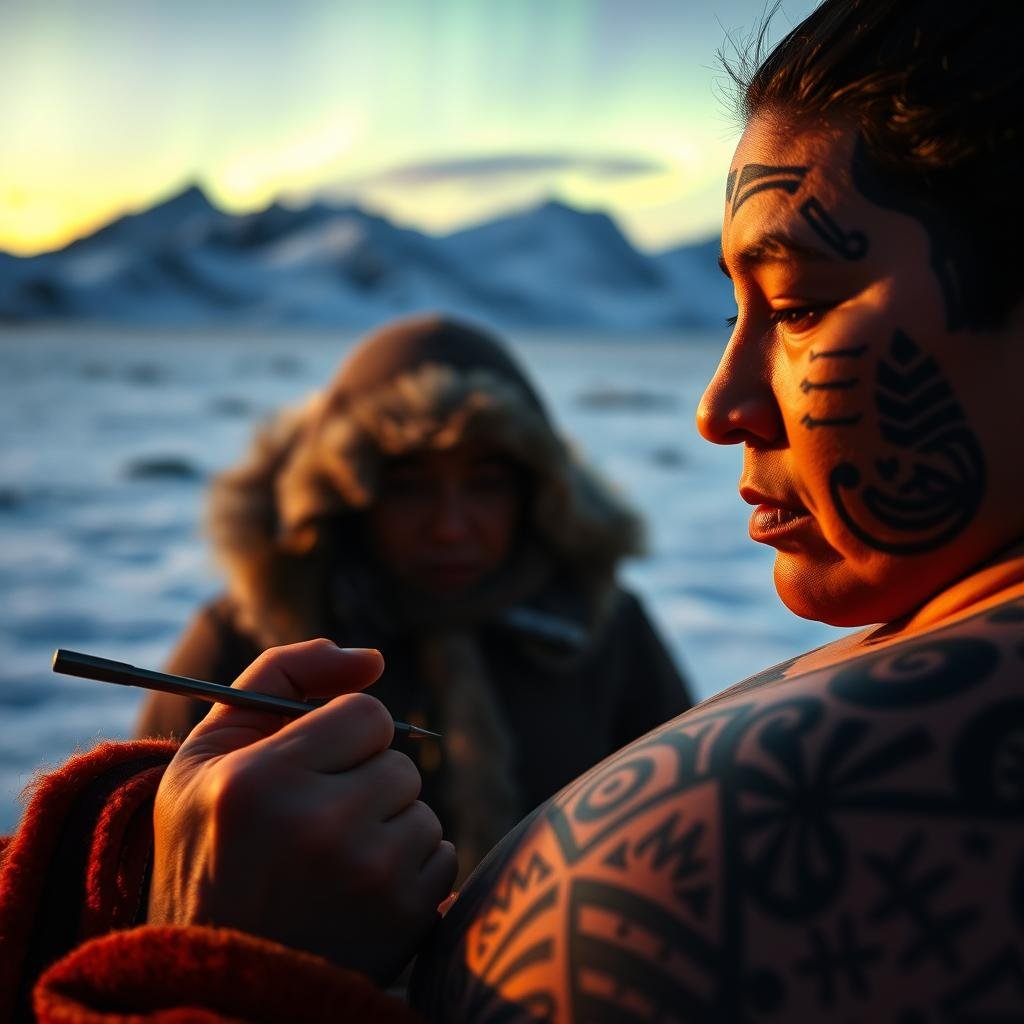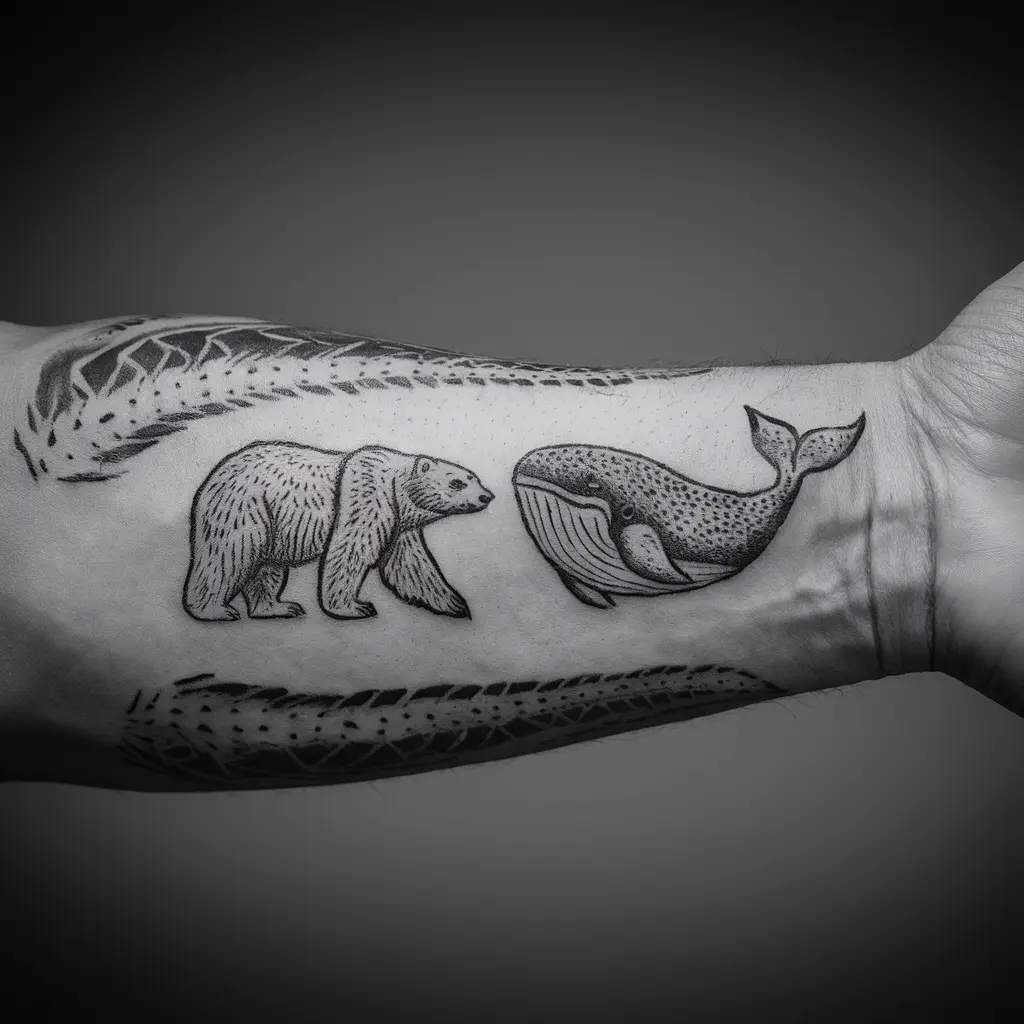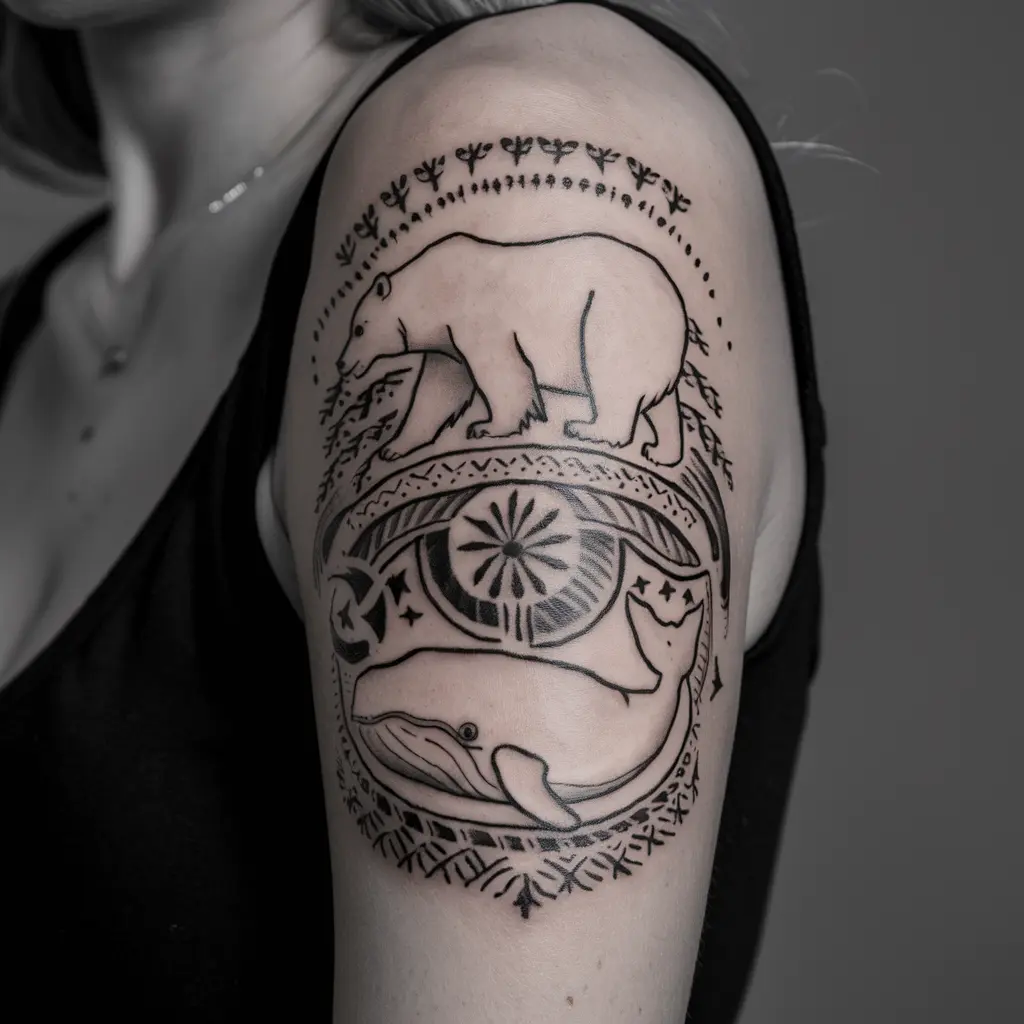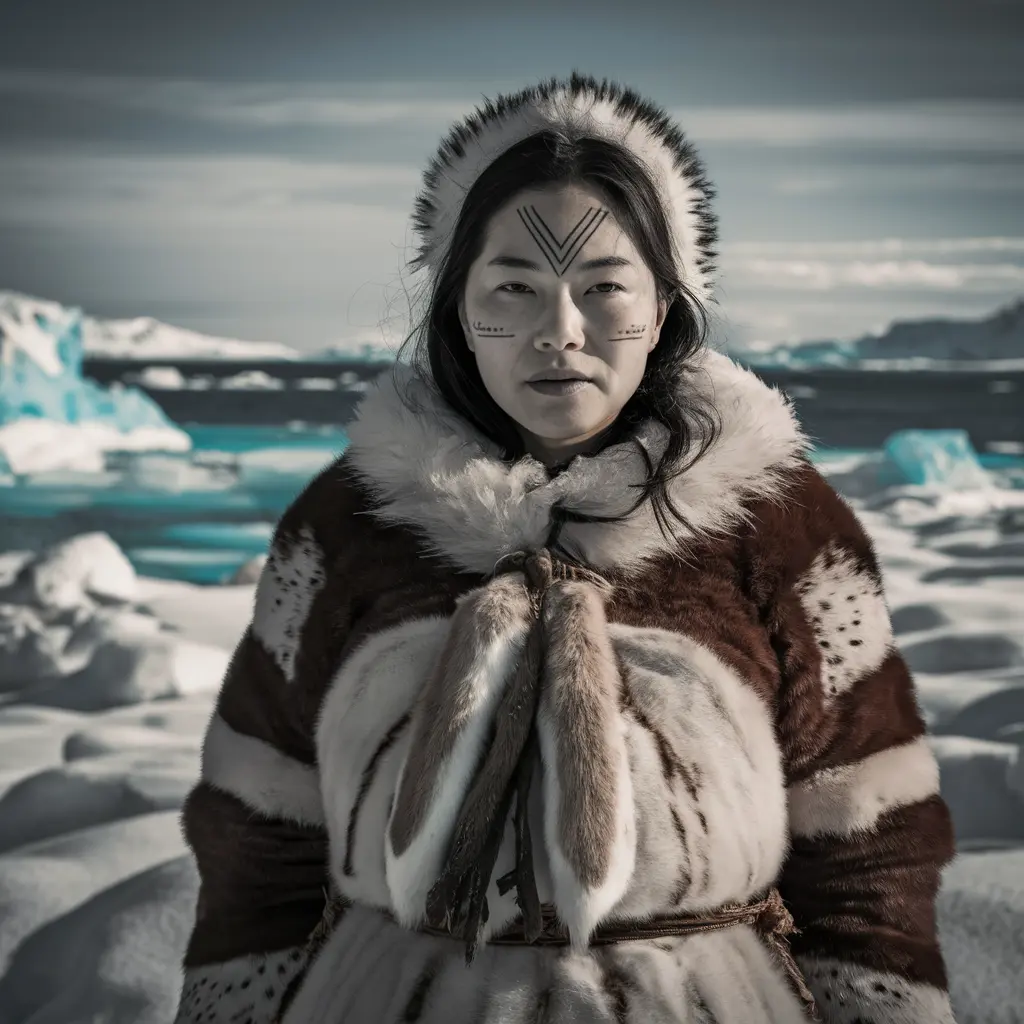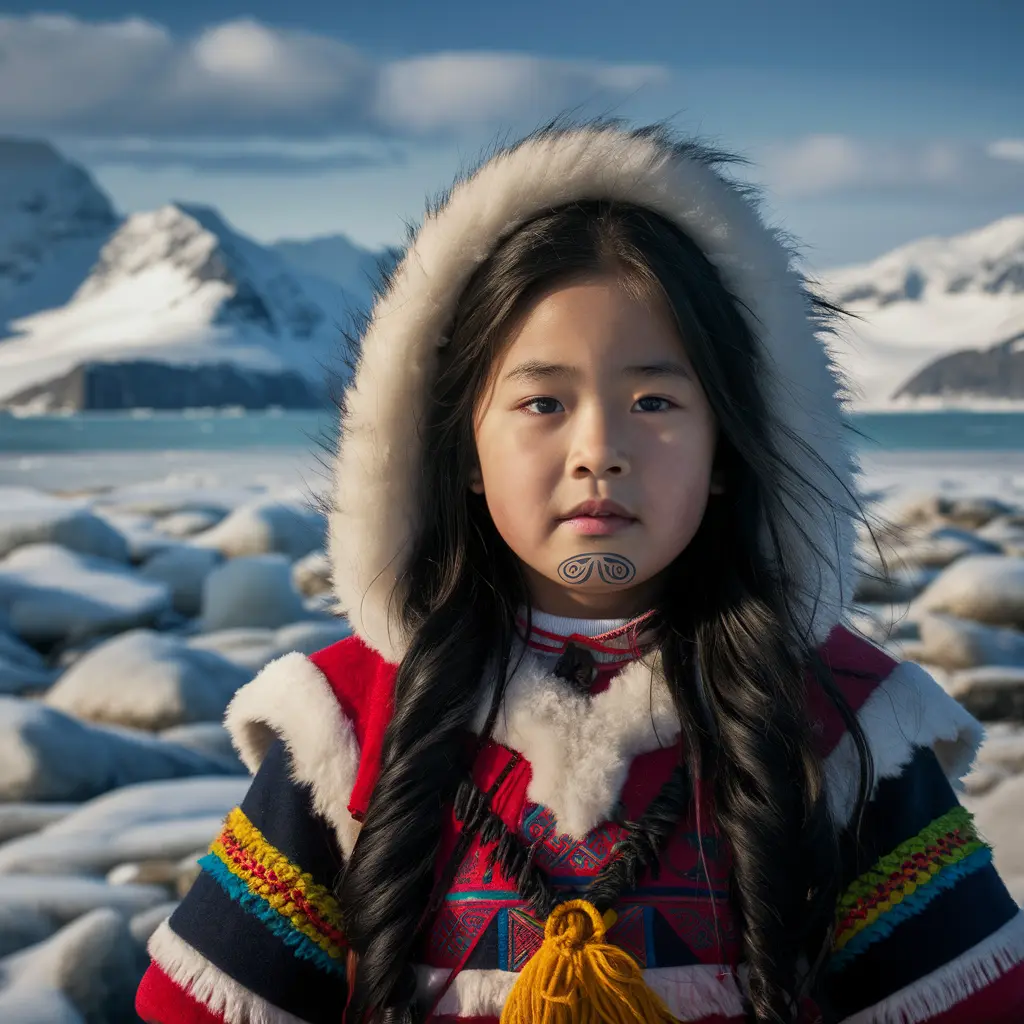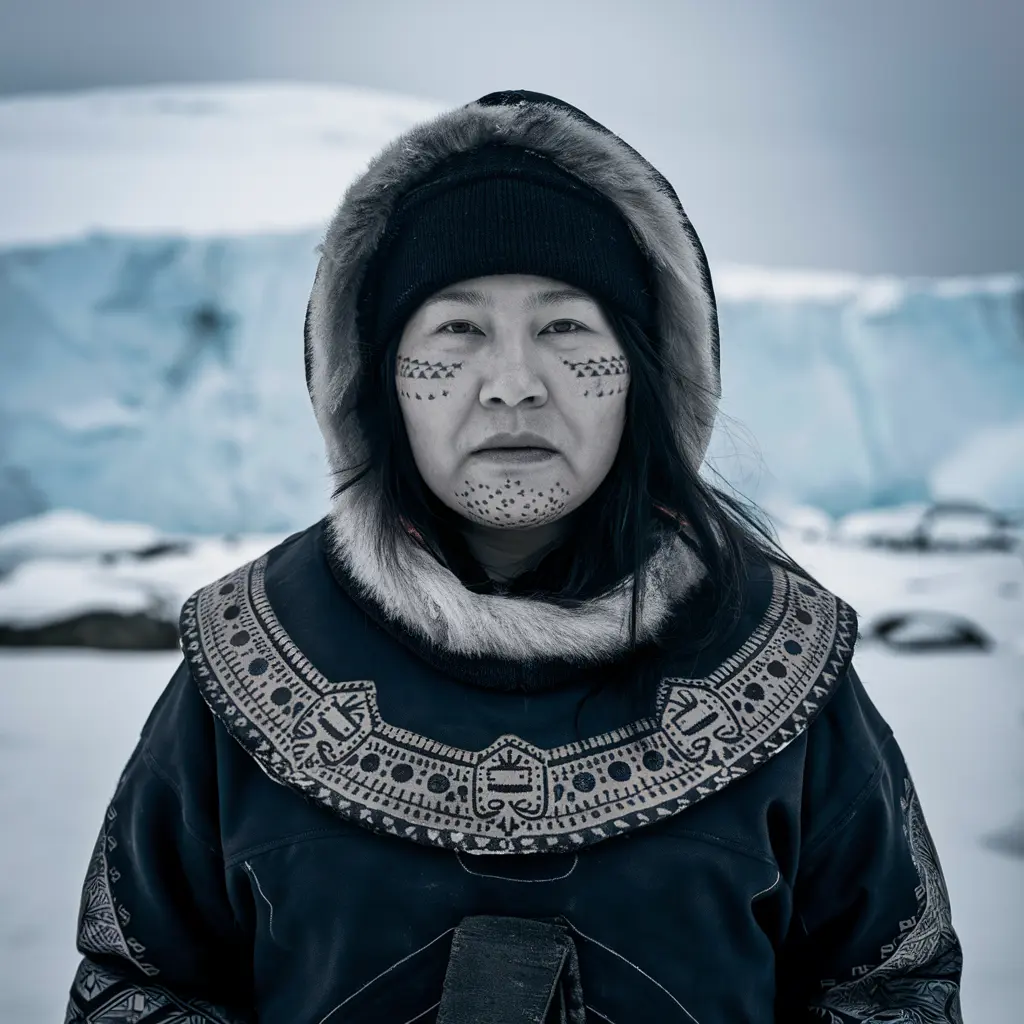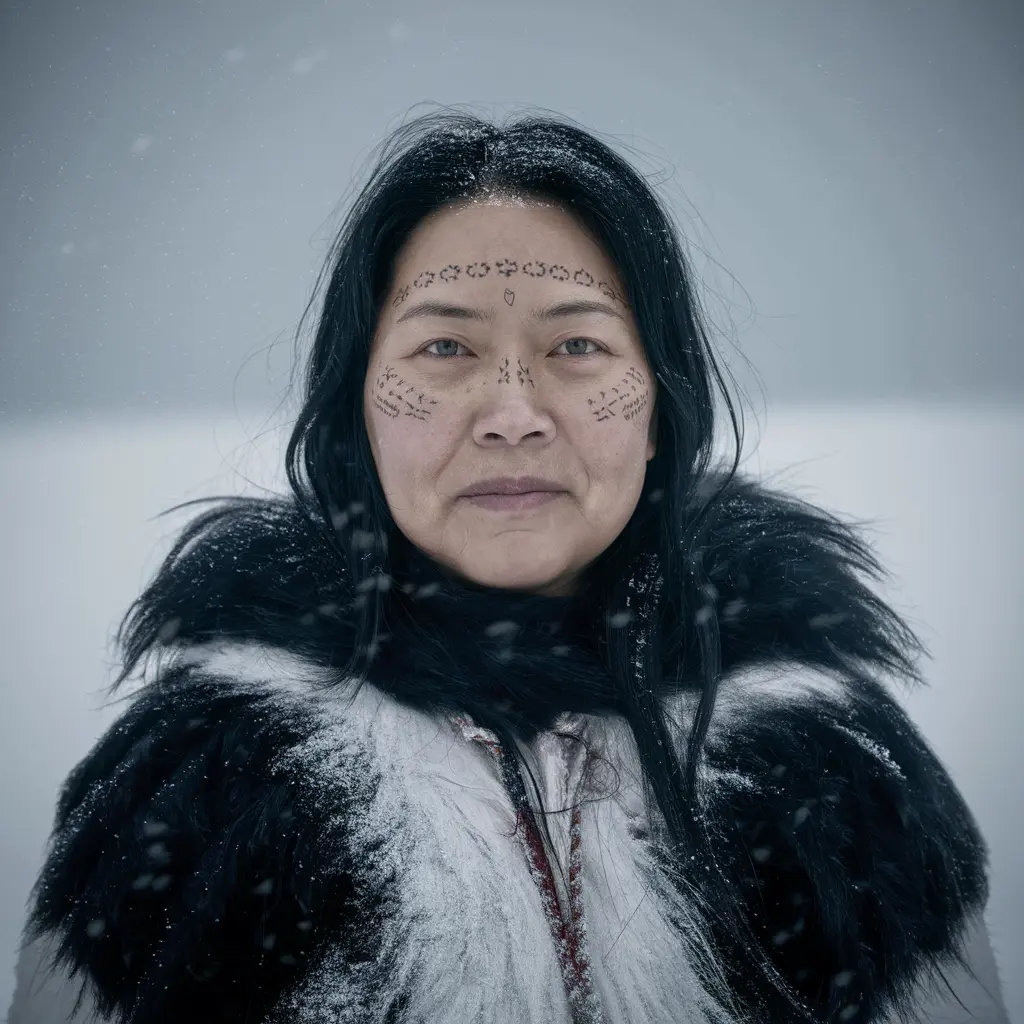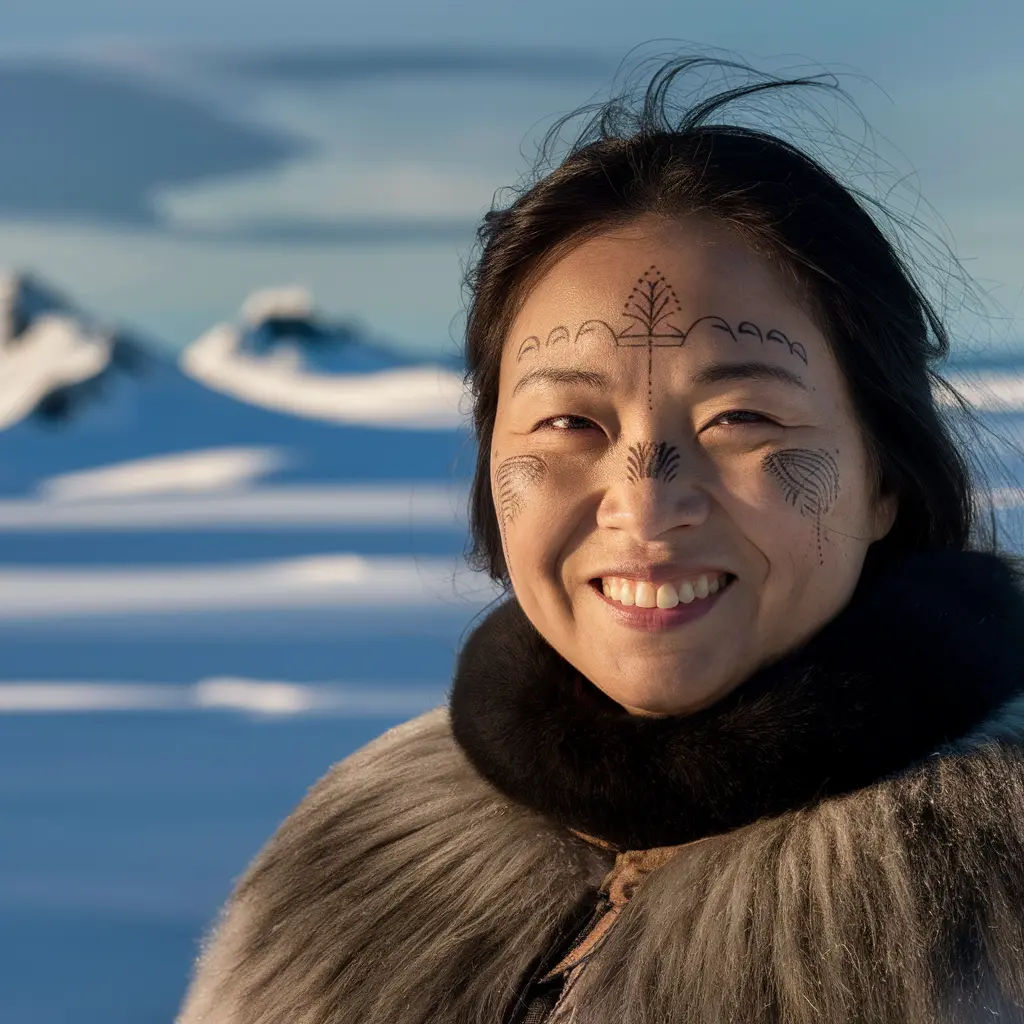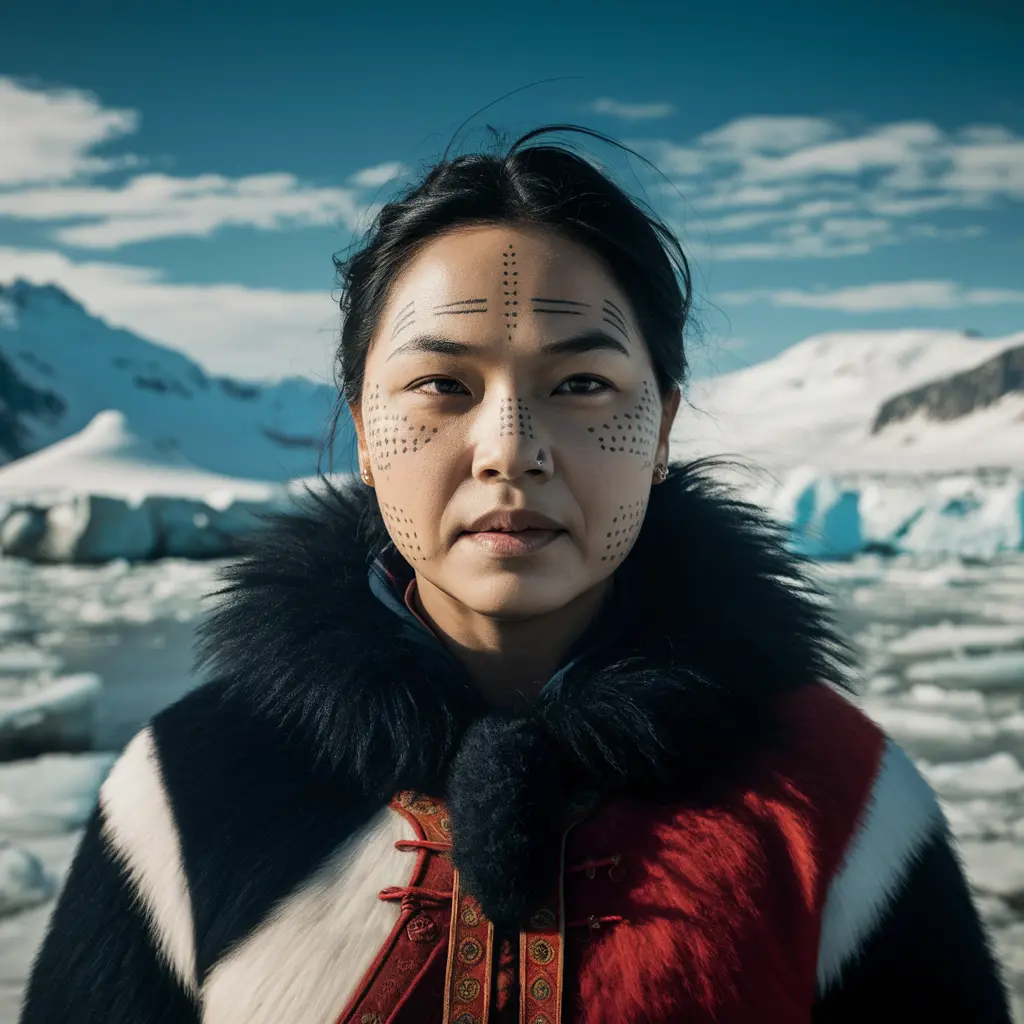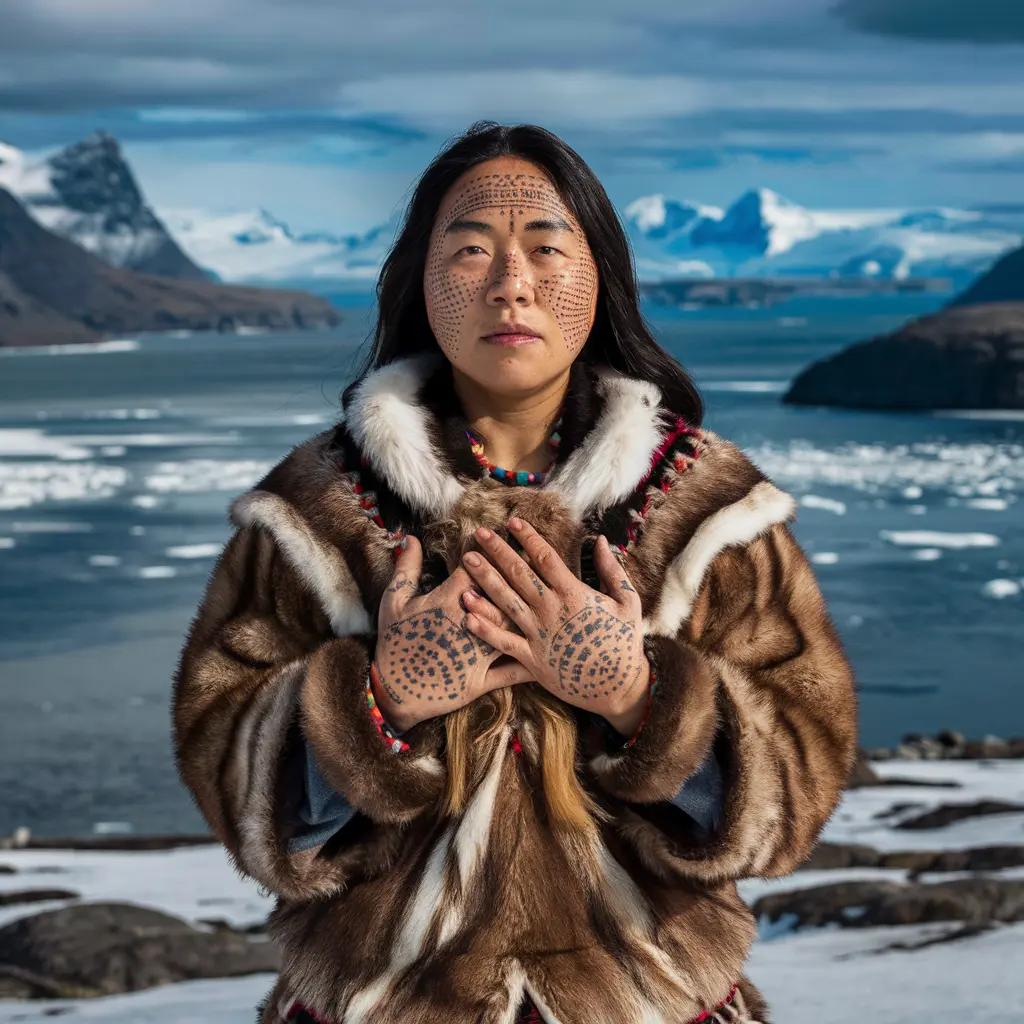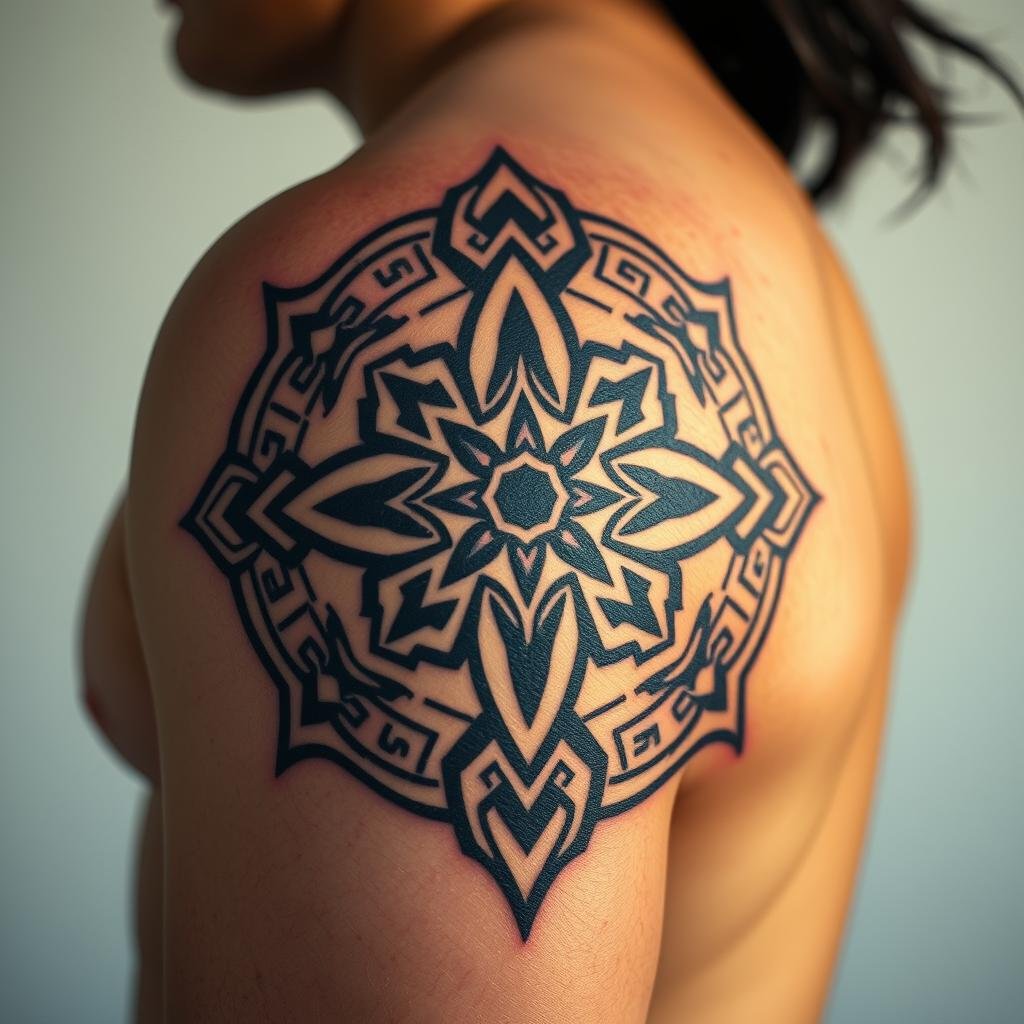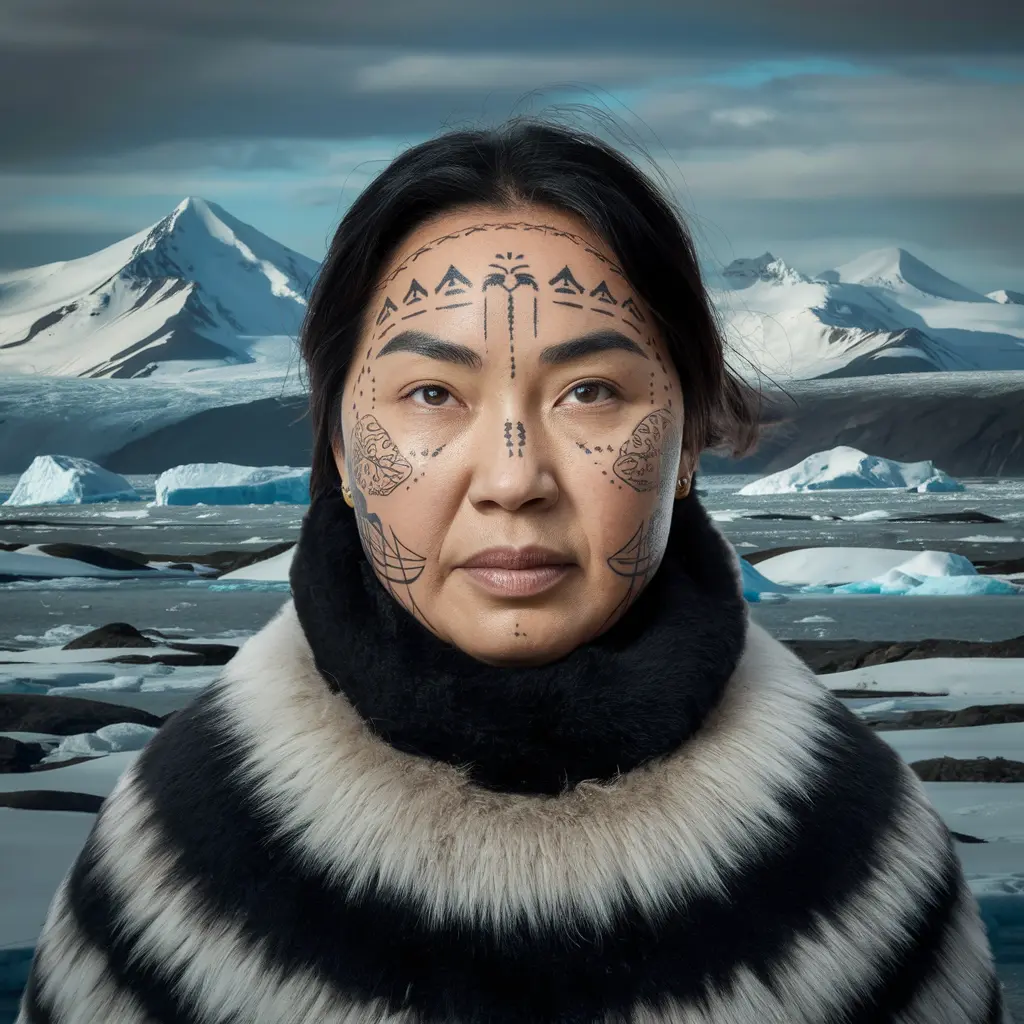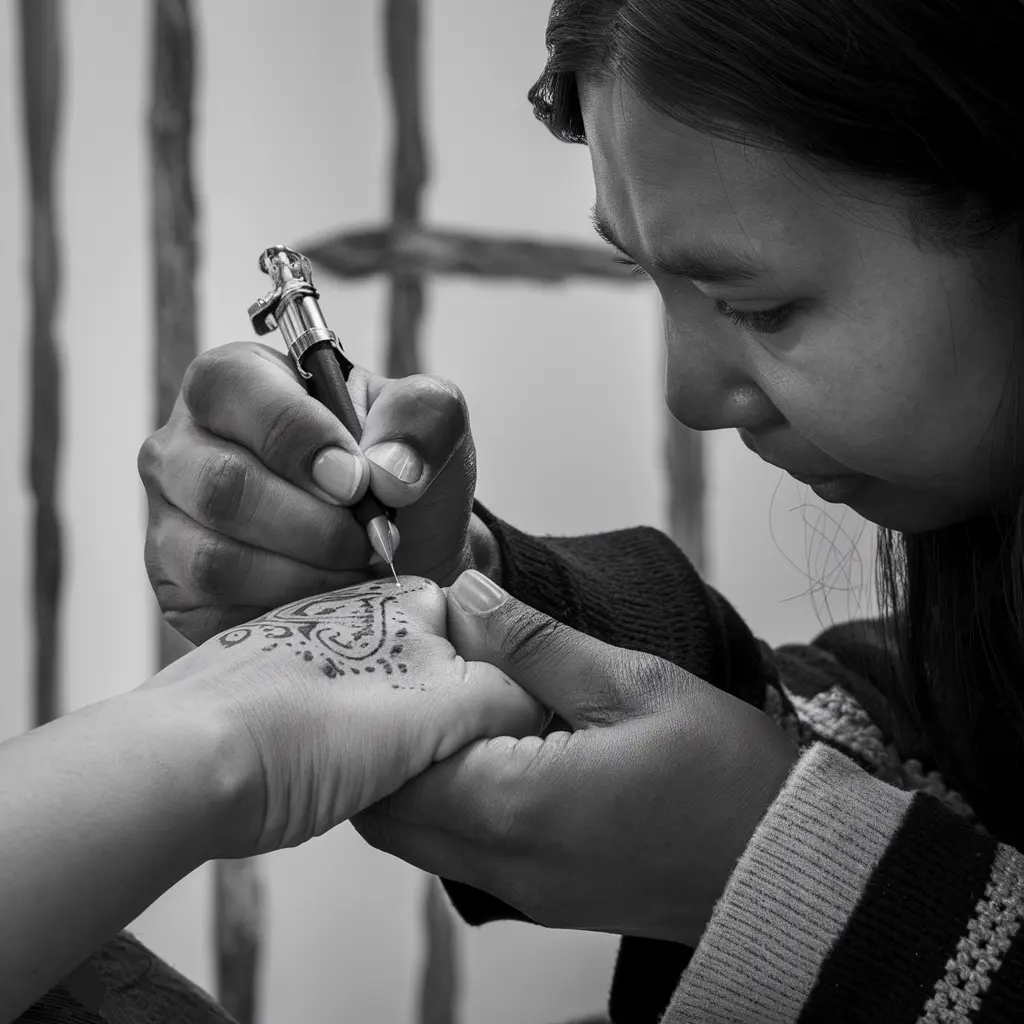Imagine a cold Arctic morning. The wind whispers stories of generations past. In this setting, Inuit tattoos are more than just ink. They are stories of cultural identity and personal change.
Inuit tattoos, like Tunniit and Kakiniit, are not just art. They symbolize womanhood, personal history, and spiritual connection. For thousands of years, Indigenous women have used these tattoos to share their stories.
These tattoos have been around for 3,600 years. Each design holds deep meaning. They mark important moments and connect us to our ancestors.
Exploring Inuit tattoos, you’ll see they’re more than beauty. They are a strong way to express culture. They’ve survived through tough times like colonization and missionary efforts.
Inupiat women’s chin lines and Y-shaped symbols show family ties. These tattoos tell stories of survival, pride, and cultural strength. Let’s dive into the world of Inuit tattoo traditions.
The Ancient Origins of Inuit Traditional Tattoos
Inuit facial tattoos have a long history. They go back thousands of years. These tattoos are more than just designs. They tell stories of personal and cultural importance.
Tracing the Historical Roots
Studies show Inuit tattoos date back at least 3,600 years. A special ivory mask found in 1986 on Devon Island in Nunavut is key evidence. It showed a tattooed woman, showing how important tattoos were to Inuit people.
Cultural Preservation Through Generations
Tattoos were key to Inuit identity before colonization. They marked important life events. For example, a V-shaped forehead tattoo meant a woman had grown up.
Not having tattoos was rare in Inuit society. Tattoos had spiritual and practical uses. They helped families recognize each other in the afterlife and even helped with hunting. Today, bringing back these tattoos is a sign of cultural strength and pride.
Understanding Traditional Inuit Facial Tattoos
Inuit tattoos mean a lot in indigenous Inuit art. They tell stories that go beyond just looks. Each mark on the face has deep meaning for the person and their tribe.
These tattoos have special patterns on the face. Chin lines, eye marks, and forehead designs show life stories and achievements. Women tattoos for big life events like growing up, getting married, or showing great skills.
The art of Inuit tattoos is very detailed. It’s passed down through families. Women often got three lines on their chin to mark adulthood. Some tattoos took less than 30 minutes, while others took up to 9 hours.
These tattoos were more than just looks. They were a way to tell stories of life, tribe, and achievements. Now, young Indigenous people in Alaska and other places are bringing back these traditions.
Seeing these tattoos as more than art is key. They are historical records, personal stories, and strong signs of cultural identity. They are forever on the skin.
The Sacred Art of Tunniit and Kakiniit
Inuit tattoos connect deeply to heritage and identity. Tunniit and Kakiniit are more than body art. They are living stories passed down through generations.
These tattoos marked personal and tribal identity. Women got tattoos at big life changes, like becoming a woman or getting ready to have a baby. A ‘V’-shaped mark on the forehead showed a girl was now an adult.
Exploring Facial Marking Techniques
Different areas had their own tattoo styles. Some focused on the chin, others on the forehead or cheeks. The hand-poked method needed great skill and spiritual knowledge, turning skin into a canvas of cultural memory.
Regional and Tribal Distinctions
Inuit tattoos varied across the Arctic. East Greenland kept their traditions longer than West Greenland, where missionaries changed things fast. Now, a cultural revival is bringing these traditions back, with young people learning their ancestral art.
Traditional Methods of Inuit Tattooing
Inuit spiritual skin markings are a deep cultural art. They have been passed down for many generations. The old ways of making these tattoos are very detailed and meaningful.
They used tools made from bone and caribou sinew threads. These tools were very fine.
Your ancestors were very skilled at making these tattoos. They soaked sinew threads in seal oil. They mixed soot with it to make dark ink.
They used a special method called hand-poking. Each mark told a story of their journey and who they were.
Different places had their own tattoo styles. In Alaska, women got tattoos on their chin or forehead. These tattoos marked important times in their lives.
Today, Inuit tattoo artists are keeping these old ways alive. They use hand-poking and skin-stitching. This helps younger people connect with their heritage and celebrate their identity.
Inuit Tattoos with Meaning: A Deep Dive into Symbolism
Inuit tattoos are more than just body art. They tell stories of Arctic life and personal experiences. Each design is full of meaning, turning the body into a canvas of symbols.
Patterns of Personal Narrative
Traditional Inuit tattoos show a person’s life journey. About 50% of Inuit women got tattoos as a rite of passage. These tattoos marked achievements, family ties, or important life events.
They often included Arctic animals like polar bears and whales. These designs showed the beauty of the harsh Arctic environment.
Spiritual Connections and Cultural Identity
Tattoos hold deep spiritual meaning. They tell stories of protection, strength, and connection to ancestors. Inuit people see tattoos as a key part of their culture, with 65% valuing them highly.
The black ink used in these tattoos symbolizes strength and tradition. It’s made from natural pigments.
Today, traditional tattoos are making a comeback. Each design is a statement of pride and cultural preservation. Your tattoo is a living story of Inuit strength and tradition.
The Role of Women in Inuit Tattoo Traditions
Inuit tattoo history shows how women were strong and proud. They were not just getting tattoos but were also making them. From a young age, Inuit women got tattoos that told their life stories.
These tattoos marked big moments in a woman’s life. A V-shaped tattoo on the forehead meant she was becoming a woman. Chin lines showed her first period. Thigh tattoos welcomed new babies and helped with childbirth.
Getting married was tied to these tattoos too. Women needed certain tattoos to be ready for marriage. More tattoos showed a woman’s age, wisdom, and achievements in the community.
Now, modern Inuit women are keeping this tradition alive. Artists like Holly Mititquq Nordlum teach the old ways. They help keep Inuit tattoo art alive and inspiring for the future.
Coming of Age and Rites of Passage
Inuit spiritual body markings tell powerful stories of personal growth. These tattoos mark life’s big moments. They show a person’s journey from childhood to adulthood.
Marking Life’s Important Transitions
Your first tattoo was more than just pretty. It was a big cultural statement. Inuit traditions marked life stages with tattoos.
Girls got chin tattoos when they first got their period. Other tattoos celebrated big hunting wins or leadership roles.
Personal Achievement and Community Recognition
These tattoos were not just for looks. They showed a person’s skills and status. A complex design might show great hunting skills.
Patterns could show family ties or community roles. Each tattoo told a story of growth and connection.
Social Significance of Body Art
In Inuit culture, tattoos were sacred. They connected communities. Tattoos showed a person’s life, achievements, and social standing.
They marked marriage, motherhood, and more. These designs captured a person’s life journey.
The Impact of Christian Missionaries on Inuit Tattoo Culture
Christian missionaries came to the Arctic in the late 1800s. They brought big changes to the Inuit’s body art. For thousands of years, tattoos were a sacred part of their culture. But the missionaries saw them as evil.
This led to tattoos being banned. The film “Tunniit: Retracing the Lines of Inuit Tattoos” shows how tattoos almost disappeared. Women had to hide or remove their tattoos.
Tattoos meant strength and important life events to the Inuit. Banning them hurt their culture and spiritual ways. Tattoos showed personal achievements and status.
But the Inuit didn’t give up. Today, artists and preservationists are bringing back tattoos. They help younger people connect with their heritage and art.
Modern Revival of Traditional Inuit Tattoos
The ancient art of inuit cultural tattoos is coming back strong. For years, these tattoos were hidden. Now, they connect young people with their heritage.
Artists and activists are working hard to keep these tattoos alive. Maya Sialuk Jacobsen is a key figure. She helps bring back these important tattoos, showing the beauty of Indigenous identity.
Contemporary Artists Driving Change
Young Inuit artists are making tattoos cool again. They teach others and share their knowledge. This has made tattoos a symbol of pride and strength for many.
Cultural Preservation in Action
The Inuit Tattoo Revitalization Project is key to this revival. It teaches old tattooing ways. This is more than just tattoos; it’s about healing and connecting families.
Learning about Inuit tattoos helps us respect and support this cultural rebirth.
Hand-Poked and Hand-Stitched Techniques
Traditional Inuit tattoos are made with special hand-poked and hand-stitched ways. These methods keep artists close to their cultural roots. They need a lot of skill and patience, unlike today’s tattoo machines.
Hand-poking means putting ink into the skin one dot at a time. Artists use a single needle for detailed inuit facial tattoos. Each dot holds deep cultural meaning.
Skin stitching is even more complex. Artists sew a thread with ink through the skin. As it heals, the marks get darker. Maya Sialuk Jacobsen, with 20 years of experience, finds this the most challenging yet meaningful way to tattoo.
Bringing back these old ways is more than making art. It’s about keeping culture alive. Inuit tattoo artists use these methods to share their heritage through each design.
Conclusion
Your journey into Inuit tattoos with meaning shows a deep cultural rebirth. These tattoos are more than just art. They connect us to our ancestors and our identity.
Today, Indigenous artists are making these tattoos come alive again. They turn each tattoo into a story of strength and pride.
In Alaska, Greenland, and Canada, Kakinniit and Tunniit are coming back. This is a big step towards healing. Inuit people are taking back their culture, closing gaps between generations, and fighting against being forgotten.
Each tattoo is a story of overcoming, success, and spiritual bond. They are more than just pictures on skin.
These tattoos are a bridge to the past. They help younger people connect with their heritage. For thousands of years, these tattoos have kept traditions alive.
They show important life events or shared traditions. Inuit tattoos are a powerful way to express and heal.
The future of Inuit tattoos is bright. More people are interested, and artists are working hard to keep these traditions alive. These tattoos will keep inspiring, teaching, and celebrating Inuit identity for many years.




